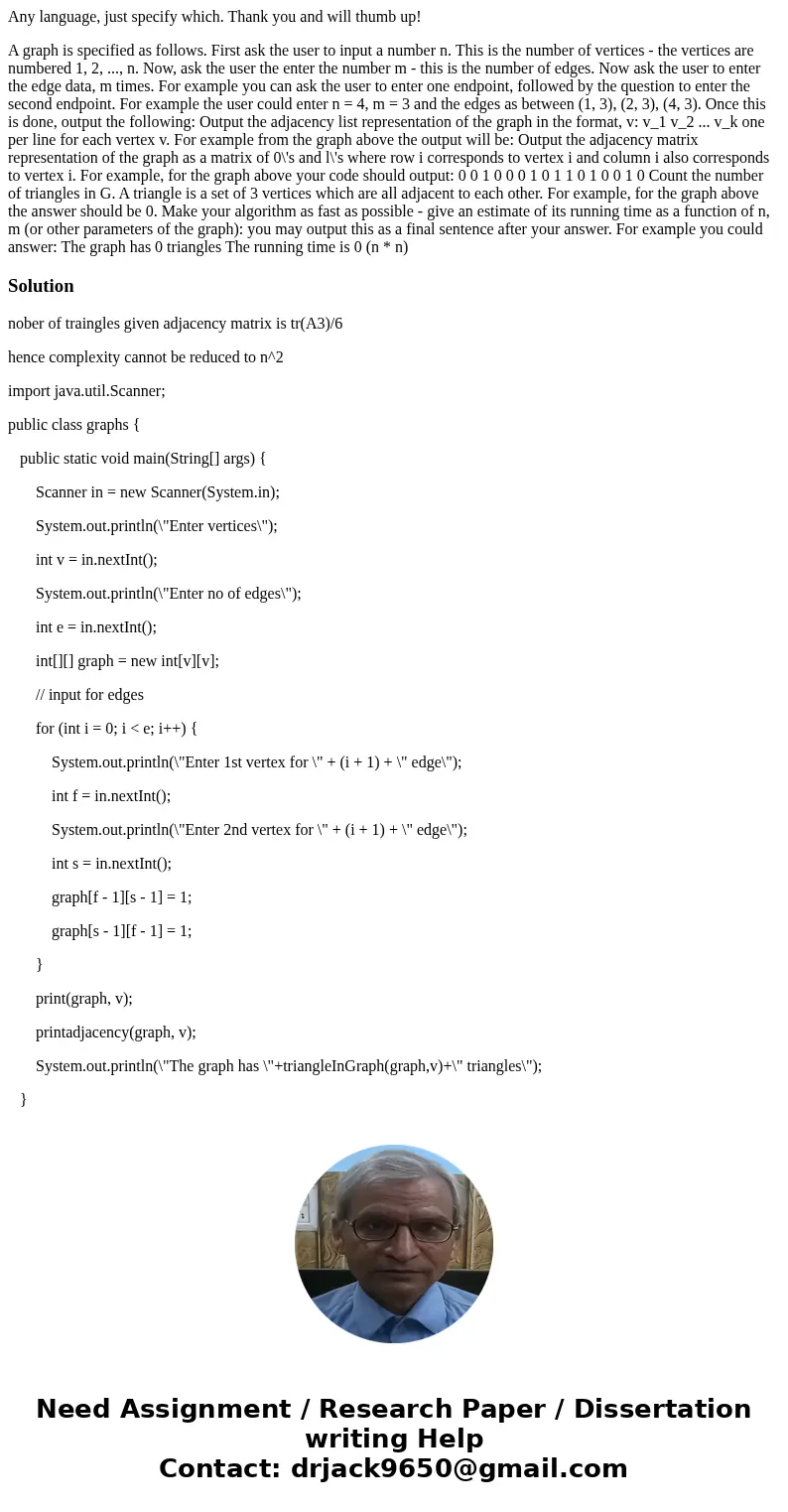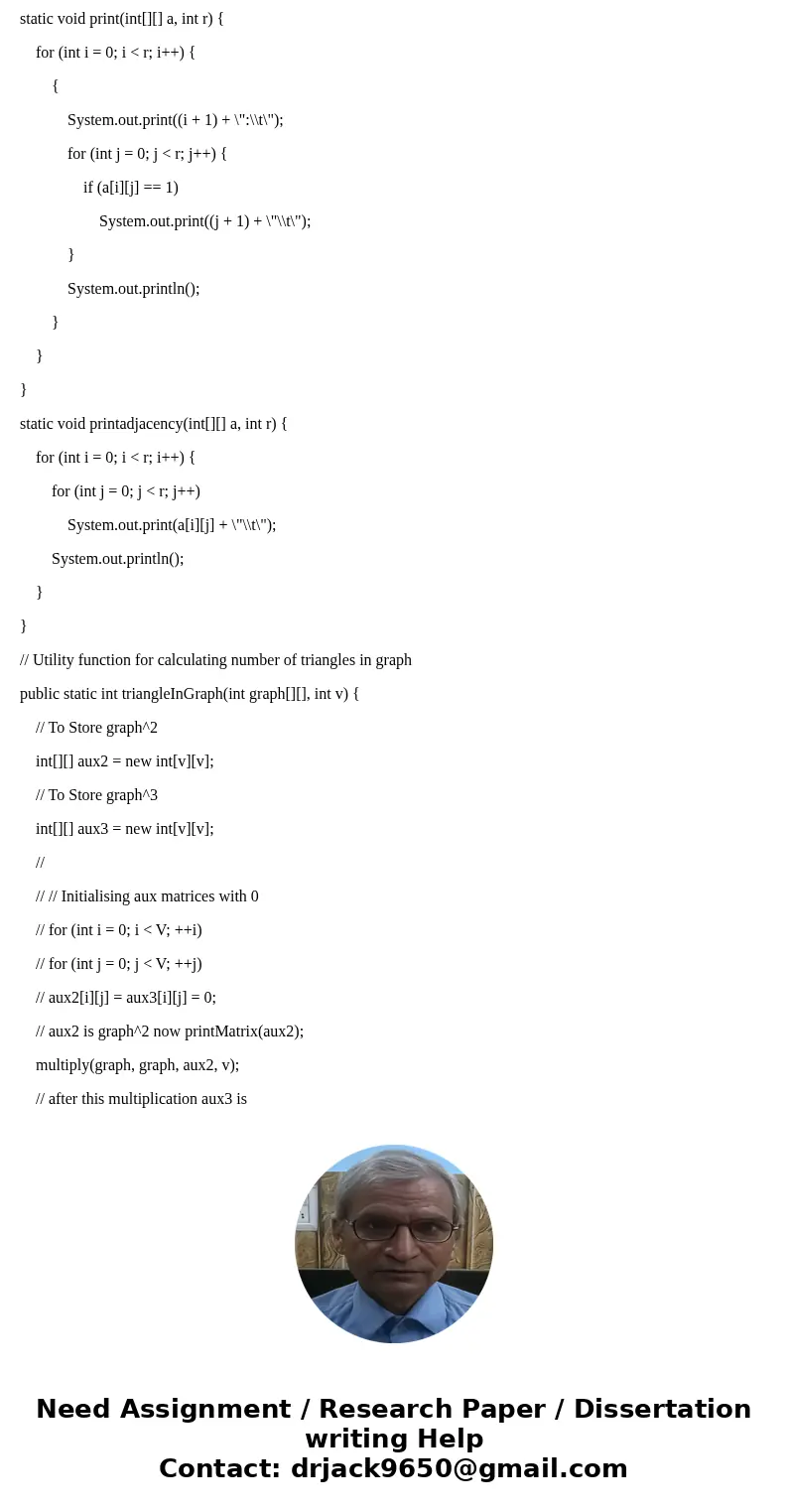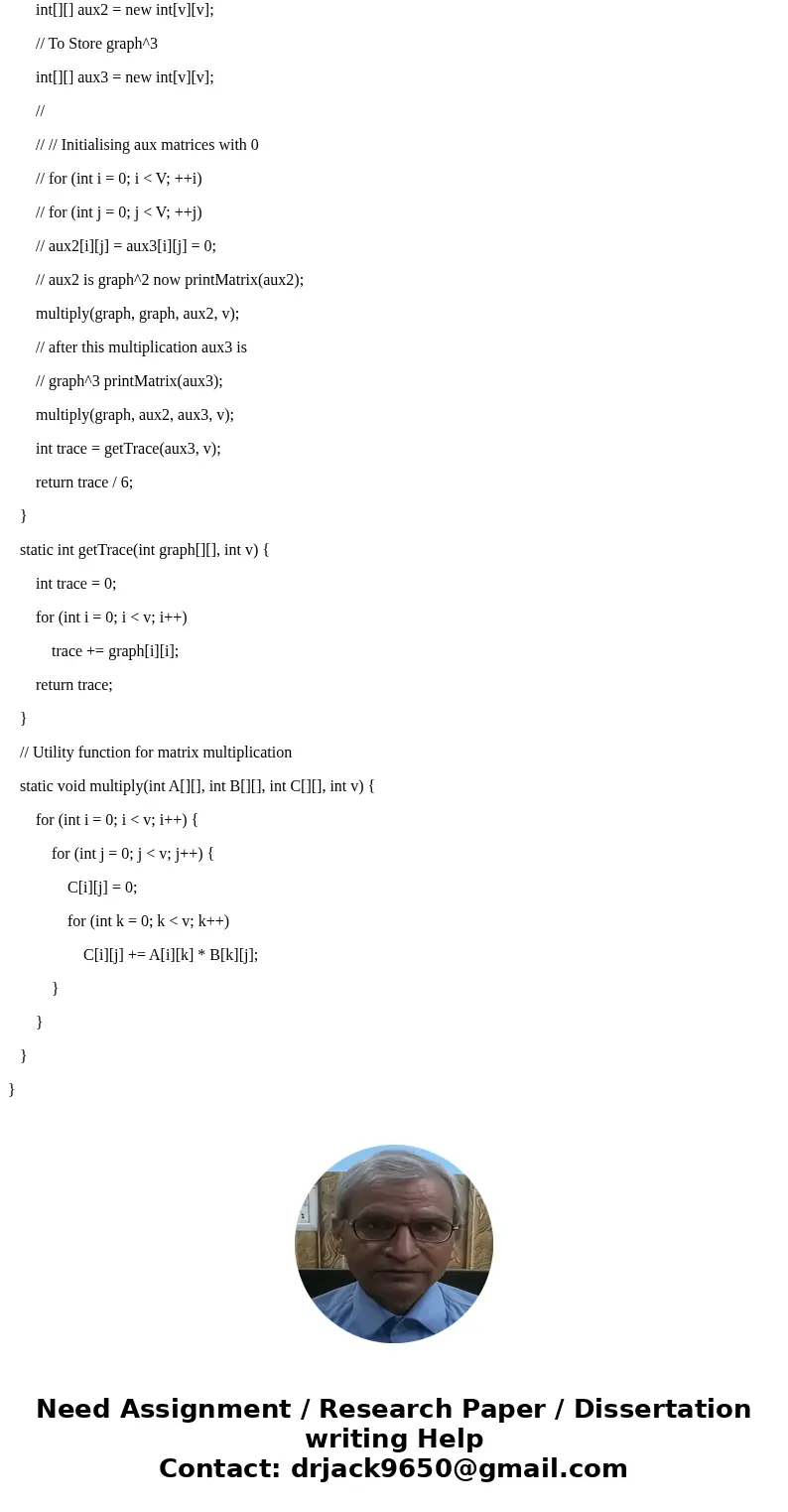Any language just specify which Thank you and will thumb up
Any language, just specify which. Thank you and will thumb up!
A graph is specified as follows. First ask the user to input a number n. This is the number of vertices - the vertices are numbered 1, 2, ..., n. Now, ask the user the enter the number m - this is the number of edges. Now ask the user to enter the edge data, m times. For example you can ask the user to enter one endpoint, followed by the question to enter the second endpoint. For example the user could enter n = 4, m = 3 and the edges as between (1, 3), (2, 3), (4, 3). Once this is done, output the following: Output the adjacency list representation of the graph in the format, v: v_1 v_2 ... v_k one per line for each vertex v. For example from the graph above the output will be: Output the adjacency matrix representation of the graph as a matrix of 0\'s and l\'s where row i corresponds to vertex i and column i also corresponds to vertex i. For example, for the graph above your code should output: 0 0 1 0 0 0 1 0 1 1 0 1 0 0 1 0 Count the number of triangles in G. A triangle is a set of 3 vertices which are all adjacent to each other. For example, for the graph above the answer should be 0. Make your algorithm as fast as possible - give an estimate of its running time as a function of n, m (or other parameters of the graph): you may output this as a final sentence after your answer. For example you could answer: The graph has 0 triangles The running time is 0 (n * n)Solution
nober of traingles given adjacency matrix is tr(A3)/6
hence complexity cannot be reduced to n^2
import java.util.Scanner;
public class graphs {
public static void main(String[] args) {
Scanner in = new Scanner(System.in);
System.out.println(\"Enter vertices\");
int v = in.nextInt();
System.out.println(\"Enter no of edges\");
int e = in.nextInt();
int[][] graph = new int[v][v];
// input for edges
for (int i = 0; i < e; i++) {
System.out.println(\"Enter 1st vertex for \" + (i + 1) + \" edge\");
int f = in.nextInt();
System.out.println(\"Enter 2nd vertex for \" + (i + 1) + \" edge\");
int s = in.nextInt();
graph[f - 1][s - 1] = 1;
graph[s - 1][f - 1] = 1;
}
print(graph, v);
printadjacency(graph, v);
System.out.println(\"The graph has \"+triangleInGraph(graph,v)+\" triangles\");
}
static void print(int[][] a, int r) {
for (int i = 0; i < r; i++) {
{
System.out.print((i + 1) + \":\\t\");
for (int j = 0; j < r; j++) {
if (a[i][j] == 1)
System.out.print((j + 1) + \"\\t\");
}
System.out.println();
}
}
}
static void printadjacency(int[][] a, int r) {
for (int i = 0; i < r; i++) {
for (int j = 0; j < r; j++)
System.out.print(a[i][j] + \"\\t\");
System.out.println();
}
}
// Utility function for calculating number of triangles in graph
public static int triangleInGraph(int graph[][], int v) {
// To Store graph^2
int[][] aux2 = new int[v][v];
// To Store graph^3
int[][] aux3 = new int[v][v];
//
// // Initialising aux matrices with 0
// for (int i = 0; i < V; ++i)
// for (int j = 0; j < V; ++j)
// aux2[i][j] = aux3[i][j] = 0;
// aux2 is graph^2 now printMatrix(aux2);
multiply(graph, graph, aux2, v);
// after this multiplication aux3 is
// graph^3 printMatrix(aux3);
multiply(graph, aux2, aux3, v);
int trace = getTrace(aux3, v);
return trace / 6;
}
static int getTrace(int graph[][], int v) {
int trace = 0;
for (int i = 0; i < v; i++)
trace += graph[i][i];
return trace;
}
// Utility function for matrix multiplication
static void multiply(int A[][], int B[][], int C[][], int v) {
for (int i = 0; i < v; i++) {
for (int j = 0; j < v; j++) {
C[i][j] = 0;
for (int k = 0; k < v; k++)
C[i][j] += A[i][k] * B[k][j];
}
}
}
}



 Homework Sourse
Homework Sourse